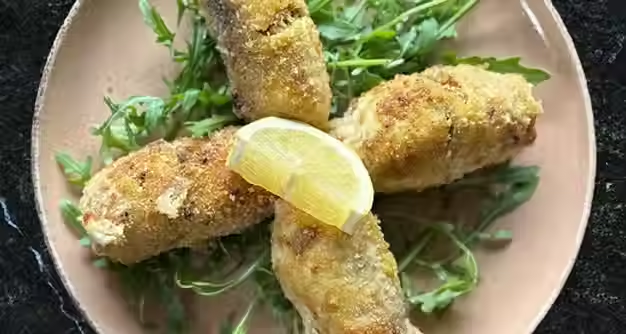More Than Pasta: Why Italian Food Is a Tapestry of Place, Memory, and Simplicity
When people think of Italian cuisine, they often picture a plate of spaghetti, a pizza margherita, or perhaps a scoop of gelato melting under the Mediterranean sun. But Italy’s food culture is far richer and more layered than these iconic images suggest — it’s a mosaic of micro-regions, old traditions, and deeply rooted memories. That’s exactly what Made al Dente explores: not just recipes, but stories that rise out of them like steam from a simmering pot.
The Real Italy Is Cooked Slowly
Italy’s true culinary brilliance lies not in grandeur, but in its humble ingredients and quiet rituals. From a rustic orange crostata baked with marmalade made from oranges sent up from Sicily, to a bubbling pasta e patate cooked slowly on a grey February day in the north, every dish becomes a story — a gesture of love, place, and memory.
And that’s what Made al Dente offers: a blog dedicated to Recipes Mémoire, Edible Stories, Regional Eats, and deep dives into Italian ingredients, all told with literary care and a reverence for tradition.
Food Is Regional, Always
Most food blogs flatten Italy into a single cuisine. In reality, Italy is a patchwork of hyper-local specialities, where ingredients and customs shift dramatically between valleys and coasts.
-
In Sicily, you might find busiate with gamberi rossi and bottarga, or enjoy a pistachio granita after a salty swim.
-
A day trip to Palermo becomes unforgettable with a simple bench-side lunch of sfincione and a slice of Setteveli cake — captured beautifully in this Edible Story.
-
In Matera, dinner is layered with history: burrata with peperone crusco, veal cheeks with Aglianico del Vulture, and a walk past ancient Sassi.
Made al Dente leans into this diversity through its Regional Eats section, showcasing Italy as it truly is: plural, intimate, evolving.
Ingredients Worth Celebrating
From sharp Pecorino Romano to sweet Tropea onions, Italian ingredients are never just parts of a dish — they’re historical artefacts, deeply rooted in the land and culture. That’s why Made al Dente also offers an entire section called Ingredients, a growing archive dedicated to spotlighting the building blocks of Italian cooking in their full glory.
Upcoming features will include summer essentials like:
-
Fresh ricotta from Campania’s hills
-
Caponata ingredients and Sicilian vinegars
-
The unsung power of celery leaves in soffritto
-
Wild fennel, almonds, and Etna honey
Each one celebrated not just for its flavor, but for the stories it tells.
A Blog for Readers, Cooks, and Daydreamers
What makes Made al Dente different is not just its focus on authentic Italian food, but the way it’s told. Posts are slow and immersive, intended for readers who love food as narrative, not just function. Think of it as a food magazine crossed with a literary travelogue — where recipes are invitations to memory and discovery.
If that sounds like your kind of table, explore the Full Library of posts — or start with a reader favourite like the Swordfish Involtini, woven from an evening in Agrigento.
✉️ Subscribe to the Newsletter
The blog also offers a quiet, thoughtful newsletter — no shouting, no algorithms. Just occasional letters from the kitchen, new posts, and recipe inspiration worth slowing down for.
Made al Dente isn’t about performance food or quick wins. It’s about slowing down, cooking with care, and remembering that great meals come from small, honest things.
Visit the blog at www.madealdente.com
Follow on Instagram: @made.al.dente
Or save ideas on Pinterest: @madealdenteblog
——————-
Article posted by:
Made al Dente | Italian Food Blog
https://www.madealdente.com/
Made al Dente is a slow- food blog dedicated to the edible memories that shape us.
Through immersive storytelling, regional traditions, and honest ingredients, it captures the taste of Italy one bite at a time — whether it’s a bergamot granita in Matera, a slice of sfincione by the port of Palermo, or the scent of drying tomatoes in an August sun.
This is not a collection of quick recipes, but a thoughtful archive of food, place, and feeling — written to be savoured, not scrolled.

